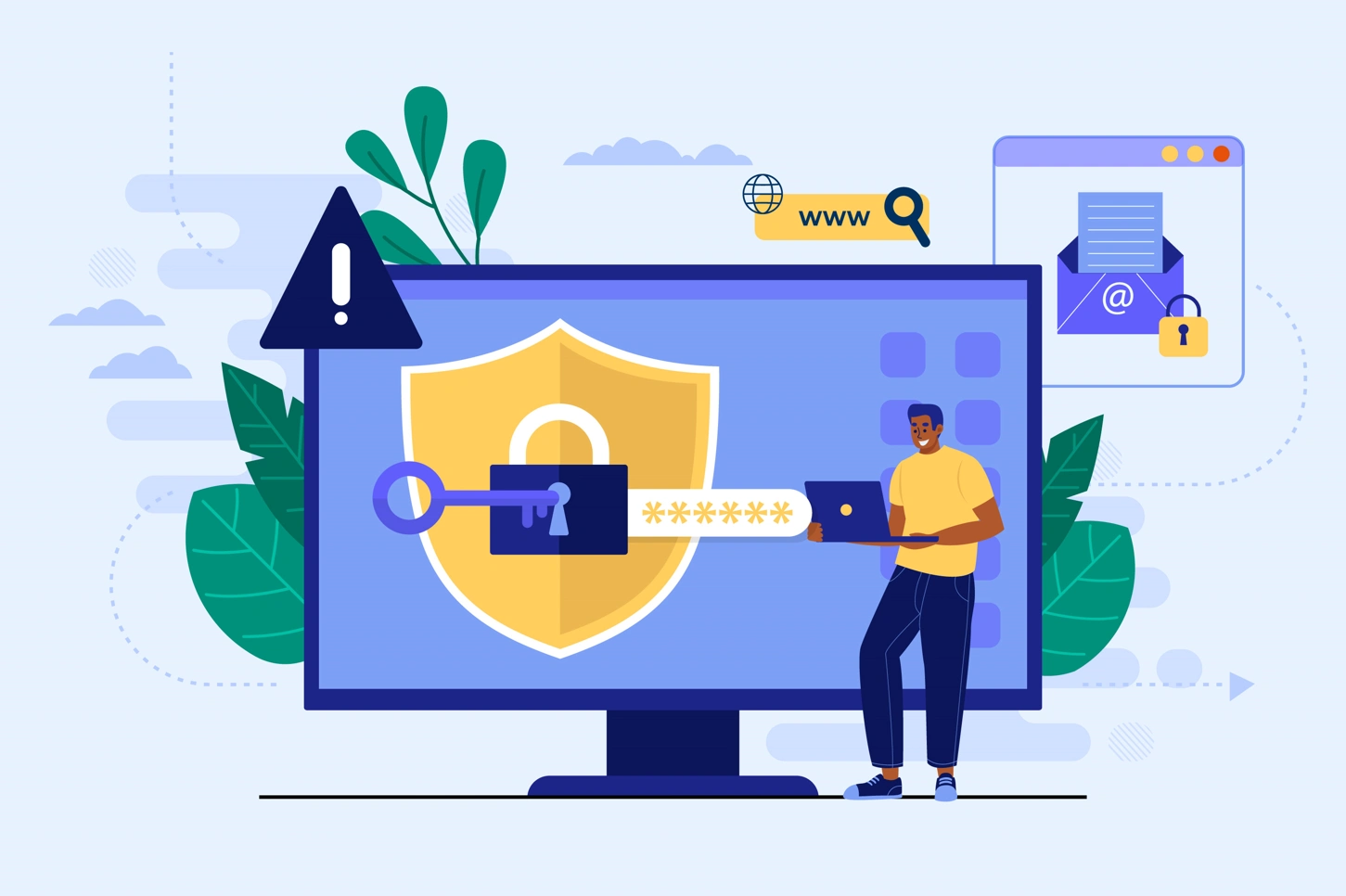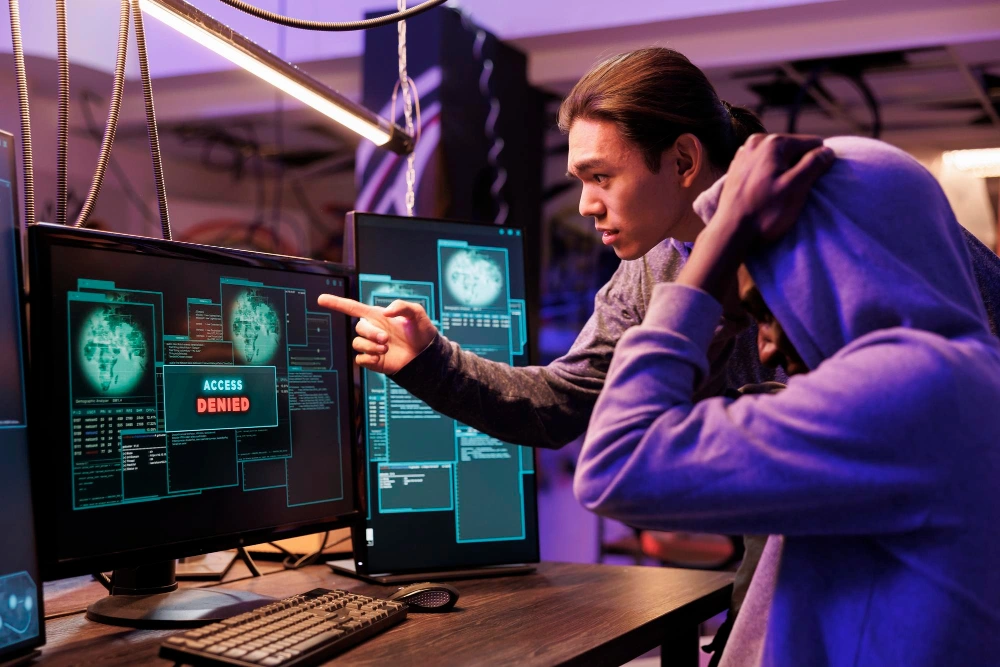Top 10 Cybersecurity Trends of 2024
Cybersecurity, in essence, is any effort related to ensuring one’s safety or protection while operating in the virtual world. Given how quickly technology is developing and how linked all devices are becoming. Therefore, it becomes critical that people, organizations, and government agencies figure out how to protect themselves against cyber threats and keep up with emerging Cybersecurity trends. Here are the Top 10 Cyber Security Trends of 2024 which you should know.

Cybersecurity Trends
Artificial Intelligence Course Training & Certification
45-min online masterclass with skill certification on completion
Mentored By Chetan Bhagat
$99 FREE
Access Expires in 24Hrs
Upcoming Batches of Artificial Intelligence Course Training :-
Batch Mode Price To Enrol Starts Every Week Live Virtual Classroom 15000
The ever-evolving field of Cybersecurity persistently advances, bringing with it new
threats, vulnerabilities, and trends. Gaining a Cyber Security Certification can help you in staying updated with these trends. So, let’s delve into a few of the prominent rising
Cybersecurity trends that people ought to be aware of.
1. Rise of Generative Artificial Intelligence

Cybersecurity Trends
Since its creation, the phrase “generative AI” (GenAI) has garnered significant
attention. With the remarkable developments in machine learning models, including
OpenAI’s ChatGPT, GenAI has raised the bar for fraudulent activities like phishing. For
example, ChatGPT can analyze a company’s marketing materials and generate
tailor-made emails, which seem genuine and credible even to trained eyes.
Just as AI models can be used negatively, we can use them to study the latest
cybersecurity trends and formulate appropriate countermeasures. All things considered, we can formulate ways to counter every type of cyber attack. GenAI can do thorough research & develop far more efficient countermeasures.
2. Uprise of Deep Fake trend in the Cybersecurity industry

Cybersecurity Trends
Artificial Intelligence has become capable enough to study videos and audio to
replicate them with exact likeness. Imagine, you get a call in the exact voice of your
family member, stating that they forgot their card at home and need to make a
payment. Certainly, you would never suspect such a call and inadvertently end up sharing your confidential data. The Latest Cyber Security Trends help you stay protected from these kinds of threats.
3. Internet of Things

IoTs are a network of physically interconnected devices. They share information
without human intervention. We are currently living in a smart era, surrounded by
smart devices such as voice assistant devices, temperature controllers, and
wearable devices like Fitbit to name a few IoTs we interact with daily. These devices contain a lot of personal information and data, which is easier to hack into. All in all, IoT adoption is increasing, and cybersecurity trends highlight the need for strict laws to guarantee safe device use and prevent breaches of critical data.
4. Rise of Smart Automobiles

This is one of the recent additions to the cybersecurity trends. Many vehicles these
days have in-built smart devices and software for better functionality. For them to function smoothly, they are constantly connected to the internet. They are sharing and exchanging data in real-time to make optimal decisions. This brings your automated and smart car at risk as any hacker can control your vehicle from outside and give it any command they want.
5. The power couple: Ransomware and Distributed Denial of Services DDoS

Malevolent cyberattacks occur with the intent to extract any form of payment is known as ransomware. Hackers breach into an organization’s server to obtain private
information. They subsequently encrypt it, making it inaccessible to the original owner. Using this encrypted data as a hostage to extract money. Concurrently, DDoS can be employed in combination with Ransomware. Consider it as a traffic block on a freeway. A denial-of-service (DDoS) attack seeks to exhaust the resources of a network, website, or application so that legitimate users are unable to use it. Undoubtedly, a DDoS assault has the potential to seriously damage an organization’s operations.
6. Increase in Multi-Factor Authentication Apps

Multi-factor authenticator such as Google Authenticator
According to the latest cybersecurity trends, most organizations have started moving away from the usage of SMS for authentications since they are not encrypted, which makes them vulnerable to manipulations. On the other hand, Multi-factor authentication (MFA) utilizes multi-level logins. For example, applications such as Google Authenticator ask for your password along with a code sent specifically on the secure App. Altogether, this method is much safer as it adds another layer of security. Therefore, companies are looking for professionals with Cyber Security Certification Courses, who can help in achieving these security goals.
7. Growing demand for Cybersecurity Insurance Trends

Cybersecurity Trends
Cyber insurance undeniably shields every business from the potentially devastating effects of cybercrimes, that compromise private data and harm a network. Since organizations have more data, programs, and devices interconnected to each other; they are more vulnerable to such attacks. Compared to how companies need insurance coverage for physical hazards, natural disasters, and business challenges, they also need insurance for cyber threats. On the negative side, your business might not have sufficient resources available to deal with these problems or cover damages if an expensive breach happens. Cybersecurity insurance can undeniably help to ensure that these attacks don’t bankrupt your company, making it one of the most prominent cybersecurity trends.
8. Cloud security threats
Most organizational data and information is stored online i.e. on cloud servers. A
ginormous amount of sensitive personnel data, financial records, intellectual
properties, etc. are stored on these servers. Unquestionably, hackers could easily attack these servers for any number of reasons such as identity theft, corporate espionage, financial fraud, etc. It’s crucial to keep up with cybersecurity trends to lessen these risks and guarantee strong security for priceless data kept on cloud servers.
9. Remote working threats
The increase in remote working patterns due to worldwide lockdowns subsequently opened up a new can of worms for the I.T. departments. Finding effective ways to protect organization data in the best way possible is the need of the hour. It can be done using various methods such as VPN and other stronger authentication processes.

10. Zero Trust Network Access
In addition to the demand for the Work-from-Home option rising, businesses keep trying to find better, more sleek ways to ward off cybersecurity threats. In a word, Zero Trust Network Access (ZTNA) is a blanket term that applies to the ‘Trust no one’ policy. This security architecture provides improved protection in a dynamic digital environment by deploying a continuous reauthorization and reassessment framework. This keeps the system up with the latest cybersecurity trends. In addition, Gartner predicts that ZTNA will surpass and replace VPN use by 70% in 2025.
Future of Cybersecurity Industry and Employment Opportunities
Chiefly speaking, in today’s digital world, a career in cybersecurity is both intriguing and lucrative. The cybersecurity market is forecast to grow at an 11.4% CAGR and reach USD 314.28 billion by 2029. In effect, the rise in cyber-related threats has brought forth a greater need for qualified individuals in this industry. Despite popular belief, anyone with a rudimentary knowledge of this technical subject can work in the cybersecurity industry.
Learn Cyber Security Trends – Henry Harvin

Top Cybersecurity course
With this purpose in mind, a comprehensive Cyber Security Program is available by Henry Harvin®, which aims to give students the tools they need to protect information and reduce dangers in the modern cyber world. Firstly, it educates students about the various Cybersecurity trends one needs to know to stay ahead of the curve. Secondly, it guarantees real-world learning and exposure to the industry with 46 hours of live, online interactive classes, and practical projects. Thirdly, it guarantees internships and placement assistance with leading multinational corporations after completing your certification. Unquestionably choose Henry Harvin® if you desire a rewarding career in Cybersecurity.
Conclusion
To sum up, the ever-changing field of cybersecurity necessitates constant attention to
detail and flexibility in response to emerging dangers. Furthermore, malicious actors’ strategies and tools also change with technology, which emphasizes how important it is to have extensive security measures. For this reason, people and organizations can reduce risks and prevent possible breaches by staying up to date on Cybersecurity trends. To preserve trust in an interconnected society and safeguard digital assets in the constantly changing field of cybersecurity, we indeed need to take proactive measures and dedicate ourselves to continuous improvement.
Recommended Reads
Q1. How will Cybersecurity perform in 2024?
Ans: As can be seen in Markets & Markets reports by 2024, the size of the global
cybersecurity market is estimated to reach USD 208.8 billion. There indeed seems to be a bright future for this industry.
Q2. Is there an increase in demand for cybersecurity?
Ans: The Cybersecurity sector is expanding quickly. All in all, projections from Labour Statistics show that employment for security analysts has increased by 32% since 2022.
Q3. Is coding experience required to enroll in Cybersecurity courses?
Ans: Basically, coding experience is not required for mid-level Cybersecurity positions. However, it would be crucial to meet the academic standards and have the required abilities if you want to apply for the top level.
Q4. What will be the biggest trend in Cybersecurity in 2024?
Ans: Chiefly, the biggest trend to be aware of is generative artificial intelligence. In the rapidly changing digital world of today, it has enormous potential to be a boon and a curse.
Q5. Why is the Cybersecurity sector expanding?
Ans: As can be seen, the development of the Cybersecurity business has been facilitated by the introduction of the internet, sophisticated smart gadgets, better broadband
connections, and a host of other causes.
Like this project
Posted Jul 19, 2024
Discover the top 10 Cybersecurity Trends of 2024, including Generative AI, Deep Fake, IoT security, and more. Stay ahead of evolving threats
Likes
0
Views
12
Clients

Henry Harvin








